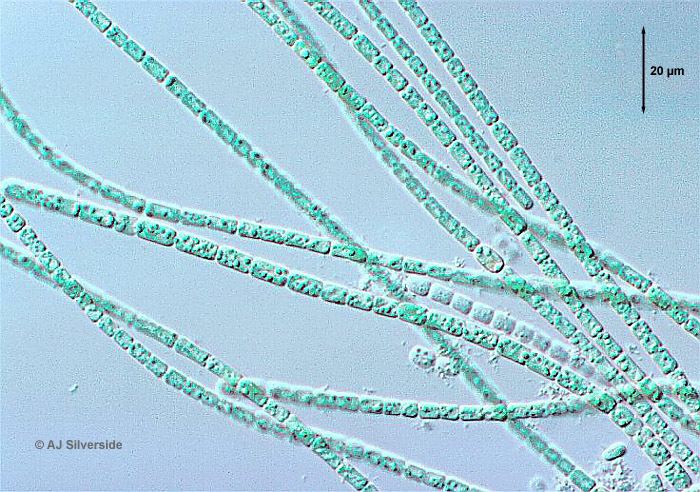Scientific name Anabaena | Higher classification Nostocaceae | |
 | ||
Similar Blue‑green bacteria, Nostoc, Microcystis, Oscillatoria, Bacteria | ||
Protozoa feeding on a decaying colony of anabaena cyanobacteria
Anabaena is a genus of filamentous Cyanobacteria that exist as plankton. They are known for nitrogen-fixing abilities, and they form symbiotic relationships with certain plants, such as the mosquito fern. They are one of four genera of cyanobacteria that produce neurotoxins, which are harmful to local wildlife, as well as farm animals and pets. Production of these neurotoxins is assumed to be an input into its symbiotic relationships, protecting the plant from grazing pressure.
Contents
- Protozoa feeding on a decaying colony of anabaena cyanobacteria
- Anabaena filaments in motion
- Nitrogen fixation by Anabaena
- Primitive vision pigments studied in Anabaena
- References

A DNA sequencing project was undertaken in 1999, which mapped the complete genome of Anabaena, which is 7.2 million base pairs long. The study focused on heterocysts, which convert nitrogen into ammonia. Certain species of Anabaena have been used on rice paddy fields, proving to be an effective natural fertilizer.
Anabaena filaments in motion
Nitrogen fixation by Anabaena

Under nitrogen-limiting conditions, vegetative cells differentiate into heterocysts at semiregular intervals along the filaments. Heterocyst cells are terminally specialized for nitrogen fixation. The interior of these cells is micro-oxic as a result of increased respiration, inactivation of O2-producing photosystem (PS) II, and formation of a thickened envelope outside of the cell wall. Nitrogenase, sequestered within these cells, transforms dinitrogen into ammonium at the expense of ATP and reductant—both generated by carbohydrate metabolism, a process supplemented, in the light, by the activity of PS I. Carbohydrate, probably in the form of glurose, is synthesized in vegetative cells and moves into heterocysts. In return, nitrogen fixed in heterocysts moves into the vegetative cells, at least in part in the form of amino acids.
Primitive vision pigments studied in Anabaena

Anabaena is used as a model organism to study simple vision. The process in which light changes the shape of molecules in the retina, thereby driving the cellular reactions and signals that cause vision in vertebrates, is studied in Anabaena. Anabaena sensory rhodopsin, a specific light-sensitive membrane protein, is central to this research.


